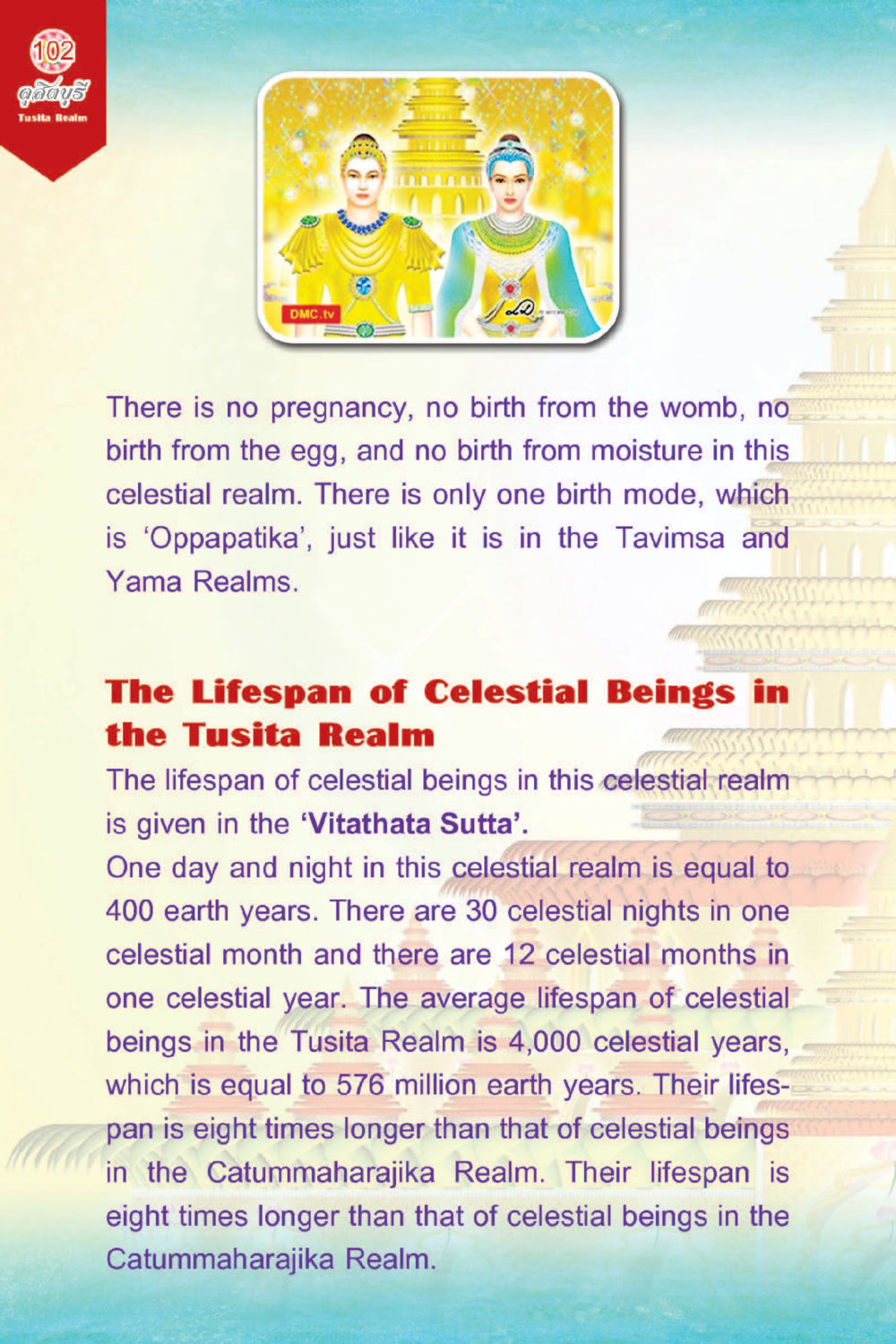Understanding Celestial Birth and Lifespan : หน้า 102/112
ดุสิตบุรี (ฉบับ ๒ ภาษา) Tusita Realm : หน้า 102/112 Explore the unique concept of birth and the extraordinary lifespan of celestial beings in the Tusita Realm.
0 ครั้ง

สรุปเนื้อหา
In the celestial realm, there is no conventional form of birth. The unique birth method is known as 'Oppapatika'. This realm, like the Tavimsa and Yama Realms, showcases a different physical existence. According to the 'Vitathata Sutta', one day and night in the Tusita Realm equals 400 earth years, with 30 nights forming a month, and 12 months constituting a year. This means that the average lifespan of a celestial being is 4,000 celestial years, which translates to around 576 million earth years. This lifespan is notably longer compared to celestial beings in other realms, emphasizing the unique nature of existence in the Tusita Realm. For more insights, visit dmc.tv.
หัวข้อประเด็น
-Celestial Birth Methods
-Lifespan of Celestial Beings
-Tusita Realm Characteristics
-Vitathata Sutta Insights
-Comparison of Celestial Lifespans
















































































































